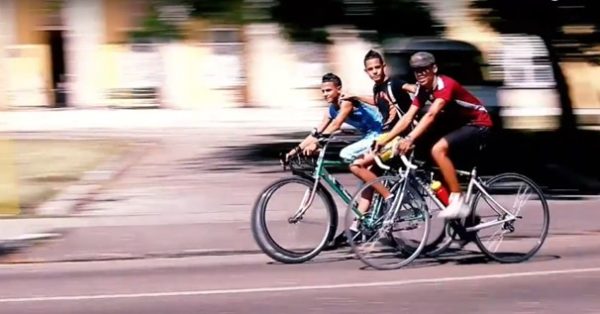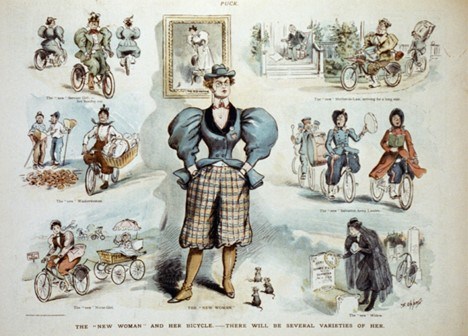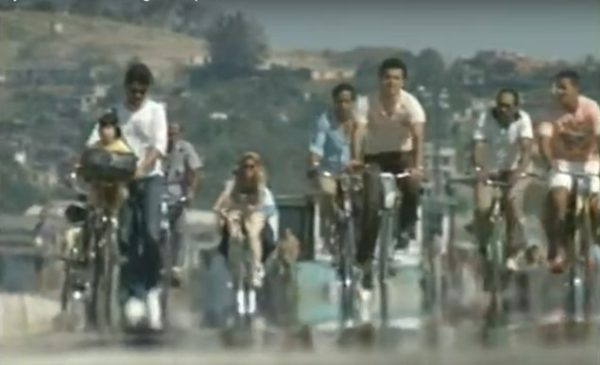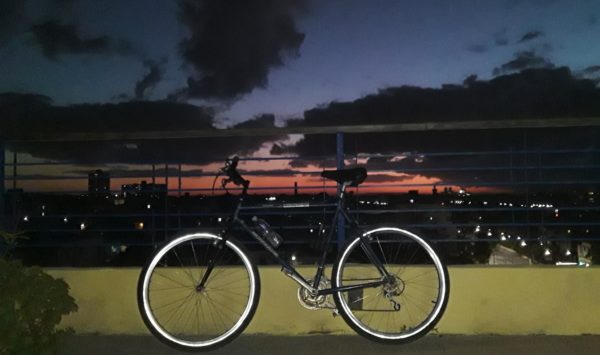Cycling in Cuba, Pros and Cons

By Jennifer Ruth Hosek
HAVANA TIMES – June 3 is the United Nation’s World Bicycle Day. Automobility is destroying our planet and bicycling is a solution. For our health and for our very survival, more people everywhere should voluntarily turn to the bicycle and governments should help their citizens move on two wheels.
Cubans often connect bicycles with suffering. Some Habanerxs who rode of necessity in the Special Period crisis of the 1990s nevertheless also have positive things to say about the experience. This essay based on a larger project draws from qualitative interviews with five men and ten women undertaken in Havana in 2018. Interviewees pointed out that bicycling’s environmental, health, and social benefits were already recognized in the 1990s; such benefits are increasingly appreciated today, especially by Habanerxs who bicycle by choice. Also, many of the female interviewees called bicycling emancipatory, in part because it allowed them to resolve problems and to move actively in public without being treated as sex objects.
From Motors to Pedals
Before the Special Period, adult bicyclists in Havana were typically men and those who were well-off bicycled recreationally. Women bicyclists were seen as transgressive. They were in good company with female riders the world over who from the 1890s onwards struggled for the right to ride.

By the 1950s, of course, motoring had long been gaining importance. Havana’s close relationship with the United States meant that cars marked the transportation landscape, representing both neocolonialism and the “good (United States) life.”
The new government made some effort to promote bicycles for mobility, equity, economy, and health. One of the first factories built was the bicycle factory Heriberto Mederos in Caibarién. As the relationship with the Soviet Union strengthened, motorized transportation again prevailed in Havana, with a welcome increase in public transportation.
In 1980s Havana, bicycling was still seen as more suited for males. Indeed, bicycles were generally considered toys. Typically, scarce and available by lottery, they were more luxury than utility.
Many interviewees agreed that women’s bicycling prior to the Special Period was judged according to patriarchally-oriented norms for movement and sexuality. Female pedalers were not only seen as gender-bending tomboys, but often also as gender-queering women who loved women. The sexuality of female passengers was also judged. Parrilleras may have been deemed to be sexually interested in the men who pedaled them, while riding entubada could express intimate relationships between them. Such classificatory speculation exerted social control over women.
Impractical clothing, footwear, makeup, and hairstyles mark femininity and heterosexuality till today. Female bicyclists often chose practical attire that made them look less typically feminine. Symbolically speaking, without these markers of femininity a Habanera was (is?) less of a woman. Perhaps even more to the point, women who dressed for bicycling were not dressing for men. When these women prioritized their activity over their looks—over presenting themselves as traditionally attractive for men—their sexual preferences tended to come under scrutiny.
Enter the Special Period
The meanings of bicycling changed dramatically with the Special Period crisis of the 1990s. Cuba scholar Mao Xianglin describes official, international, and public displays, including a formation of bicyclists about one hundred thousand strong in the May Day 1993 parade. Striking surreal and hyperreal bicycling scenes that depict community moving in hard times open and close Fernando Pérez’s canonical feature Madagascar (1994). An interviewer related an interviewee’s comments: “It shows how people transported themselves, ‘practically as if in tribes; a very particular image.’ He always draws upon that image when remembering that period and his experiences on bicycles.”

Bicycling was only one of the Special Period’s many changes that caused stress and suffering while also offering opportunities and new lived experiences. Women who bicycled and women’s bicycling had new license. Female interviewees emphasized the relative ease with which they could move themselves, passengers, and cargo with a bicycle rather than walking or waiting for the few buses. They appreciated such opportunities and referenced experiences of freedom while in locomotion. Bicycling became an activity not monitored by gender norms because it was undertaken by all.
While bicycling, activity was privileged over appearance. One interviewee highlighted that during the Special Period she did not feel herself to have been subjected to invasive (male) gazes and brash, flirty comments while cycling. The dire circumstances obviated such social judgment of women, de facto expanding women’s freedom of movement and their subjective experience of that movement. In the words of one interviewee:
“Riding a bike is exquisite, it made me feel wonderfully good. I learned when my oldest daughter [born in 1991] was seven months old . . . And I took a liking to it, I wouldn’t let go of the bike. It was also my way of exercising, clearing my head . . . And I felt independent, free.”
The recollection of one interviewee who worked as a model is particularly striking. She expresses a shift in thinking about how she looked (while working) to thinking about how she experienced herself (while bicycling).
“I never felt any [discrimination]. At that time, one didn’t notice those things . . . I came from modeling, and one image (that of a model) did not have much to do with the other (that of a cyclist), in Cuba in those years. It was a bit weird for me to think about myself on a bike at first, but that was something I soon overcame, and it had to do only with me, not with the way others looked at me. Especially since I rode out of necessity, to solve a family problem. In that context, it was a difficult decision, but I think it was the right one. If I think about it, I feel more complete for having decided to ride at that time, although now I have many reservations about riding.
“I think for all the women in the Special Period the experience was similar. I know several women who had to overcome their fears of riding. For some at some point it became fun, and they still ride, but for many others it was a decision made because of the context.”
Such assessments express shifts in self-recognition based on physical performance and experience rather than on appearance. These shifts occurred despite painful challenges. Indeed, they occurred in part precisely by overcoming these challenges. Female interviewees who were adults during the Special Period felt interpolated to bicycle because of pressures to solve problems. They bicycled as an activity shaped primarily by a goal independent of their bodily visibility. Through this repeated activity, they had new opportunities to experience moving actively, athletically, and capably in the urban landscape. This experience was sometimes felt as a liberatory pleasure.
Perhaps this result is unsurprising. Gender studies research shows that repetition of physical activities furthers bodily and self-recognition. Women’s new experiences of physical activity draw their attention to the connection between their inner and outer selves. These experiences divert attention from their imagined appearance of their own body. The intense and wide-ranging social and daily life changes brought on by the Special Period made some repetitive actions obsolete while other, new actions (e.g., bicycling) became repetitive. In this situation, female riders developed a new appreciation for themselves and for body as capacitator rather than body as object.
Reported perceptions of danger were gendered in these interviews. Several male interlocutors talked about the dangers of riding, including poor infrastructure, fatal accidents, and fatal robberies. Female interlocutors talked about how their bicycle use was curtailed by their parents who wanted to protect them. Several interviewees reported that, when possible, men opted to shield women by bicycling in their stead.
Special Period: Havana as the new Copenhagen?

As economic conditions improved, motorized transport again increased and governmental support for bicycling decreased. Bicycling “remasculinized” as part of the reinstitution of traditional patriarchal paradigms in which men perform what are considered more physically challenging activities. In Havana, it has again become less gender normative for women to bicycle and their experiences are shaped accordingly. Female interlocutors report feeling themselves forced to choose between inhabiting a more “masculine” femininity to bicycle or maintaining a more “feminine” femininity and not to bicycle.
Consider the question, “Have you ever felt discriminated against for riding a bike? and its answer:
“Not at all. No, on the contrary. Although, yes, there were cat calls, people mess with you . . . The thing is, the aggressive men here . . . They may reference [the vagina] on the bicycle seat . . . Or if I ride in a tank top, I feel like they are nearly falling between my breasts [with their gaze]. But well, hey, I go with my headphones and if they utter barbarities, I act as if I didn’t hear.”
The interviewee may not categorize the interactions as harassment, yet she has developed a mitigation strategy for them.
At the same time, another cohort of bicyclists with whom I have variously spoken at length on many occasions, merits further research. These members of the “Post-” Special Period generation report riding for pleasure and to better move in the city. For many, the bicycle is much less connected to the suffering of the Special Period because they themselves lived it primarily through stories. Some younger members of Havana’s growing upper-class bicycle primarily for recreation. This younger demographic is also influenced by bicycle riding abroad and bicycle tourism in Havana. Such new interpretations of cycling may raise its status for all riders.
Pedaling forward
Although the Revolution valorizes women’s bodies as working bodies, the long-standing Latin culture of gender differentiation and women’s feminization and objectification remains. Women who practice gender nonconforming activities are often controlled (typically by men) through sexual advances and sexual violence. Interviewees report experiencing such censure even in today’s Havana.
In 2013, the Cuban government published a white paper that promised support for bicycling to improve urban transportation. Bike-share and repair projects have been launched. Studies done with underserved populations in the United States suggest that bicycle ownership meets transport needs better than bicycle rental. Certainly, much remains to be done.
The Trump-era embargo restrictions and Covid have brought further strain to the transportation system. A proliferation of electric scooters, e-bicycles and imported bicycles on one hand and the resurrection of those few bicycles that have been gathering dust on the other illustrate the increasing divide between the haves and have-lesses. Spare parts remain a problem.
Where should the future lead? Cuba’s nearly three-decades-old practices of utilitarian two-wheeling that continue to today offer a fecund basis on which to again expand nonmotorized transit. Let climate-change-denying, luddite, old guard Cuban exile community members propagandistically and wrong-headedly decry bicycles as evidence of governmental failure if they wish! Bicycle-friendly policies in Havana would resonate with projects in forward-thinking global cities. More robust networks of bicycle taxis, cargo bicycles, classic bicycles, and three-wheelers combined with traffic-calming measures and public transport are necessary and possible.
The particular story of Cuban bicycling resonates with the global story of bicycling as liberatory, democratizing, and green practice. To reclaim the austere Special Period’s broad-based bicycling “culture of necessity” as a “culture of choice” would be to have Havana reclaim its familiar position as global beacon for equitable urban spaces.







Cycling in Cuba, Pros and Cons
Pros:
1. It’s faster than walking
2. It’s not stifling hot like the bus that never comes.
3. Even if I had a car, there’s no gasoline.
Cons
1. I can’t feed myself on 2500 pesos a month. Where am I going to get the money for a
bike?
2. Even if I could afford a bike, there are too many desperate people on the street. I can’t
leave a bike anywhere. It will be stolen.
Inciteful article!
I suggest your next article should be “Horses and Carts – Cubans lead the world in environmentally friendly transportation”